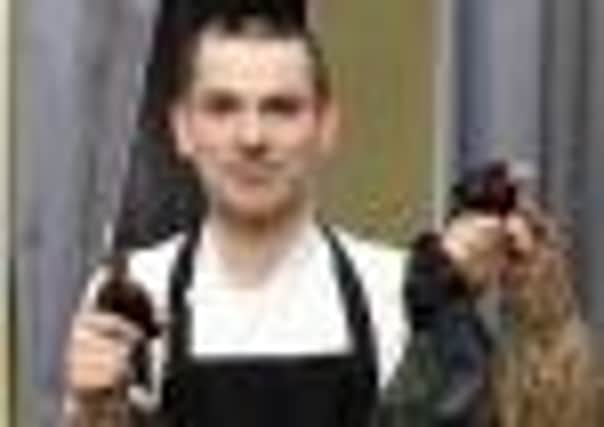Shoot to thrill: hunting was child’s play for gamekeeper’s son


Brian Grigor held his still smoking weapon in his arms, surveyed his red-haired victim and felt a surge of pride.
“I don’t suppose I probably thought like most 13-year-olds,” he admits with a shrug. “I’d been shooting with my dad lots of times, so I wasn’t squeamish. Instead, my first kill brought a kind of sense of pride. I’d shot my first fox.”
Advertisement
Hide AdAdvertisement
Hide AdRaised in rural East Lothian, summers spent racing alongside his gamekeeper dad as he toured the grounds of a sprawling estate, it was natural that Brian grew up to savour the distinctive flavours of rabbit and venison, tender pheasant and duck.
Which is why these days he has swapped the rolling countryside of the East Lothian estate where his dad, Ronnie, still works as a gamekeeper and is instead found at the other end of the food chain, in the pristine kitchens of one of Scotland’s premier hotels, the Balmoral.
From there he’s emerged as the country’s champion
game chef, after a UK competition in which he not only cooked and served his dish, but added in the unusual ingredient of shooting and butchering it as well.
“I think that could have given me the edge,” he nods, recalling how he prepared for the Game Chef of the Year contest by dusting down the shotgun and heading out to the countryside with his father. “We went out stalking a week before the competition. We shot a roe deer. My dad has a chiller so we hung it there for a week before I butchered it.
“I took pictures of each stage of the process which I put on the menu next to the dishes so the judges could see that I understood what I was doing.”
The 31-year-old sous chef – whose route from kitchen porter at a hotel in Humbie to Hadrian’s was via Greywalls in East Lothian, the Balmoral’s Number One restaurant and Tom Kitchin in Leith – served his venison with a butternut squash puree, using sections of the meat taken from “head to toe” including the kidneys and the liver, the tongue and, the prime cut, the loin.
It was a winning dish. Six other chefs from around the UK – among them Owen Morrice who cooks at Pierre Victoire in north Edinburgh – couldn’t quite top the quality, never mind the sheer effort that simply getting his game-themed two courses to the plate had entailed.
Yet for the Leith-based father-of-one, going to the lengths of hunting, shooting and serving up the results of your own stalking spree is just natural.
Advertisement
Hide AdAdvertisement
Hide Ad“It was a way of life for us,” he says, recalling growing up in East Lothian, on the fringes of a country estate near Humbie. “I was eight or nine when I fired my first shot at some old cans hung up on the washing line. With a dad for a gamekeeper, we’d eat pheasant like other folk eat chicken, two or three times a week. So I reckon game is in my blood.
“But people often have a strange attitude to game.Chicken, beef and lamb is so mass-produced that people become removed from the fact that it’s been killed and cut up at all. They buy it pre-packaged in a supermarket whereas with game, many seem to have this idea that they are eating Bambi and get quite emotionally attached to it. But I believe people’s perception is starting to change. Restaurants are putting more game dishes on the menu, and diners are more keen to try.”
Game does appear to be enjoying a revival, with health gurus advocating venison as a low-fat, flavoursome alternative to beef with the added extra of Omega 3, which is normally found in fish. High-profile chefs such as Tom Kitchin – one of the Game Chef of the Year judges – have long embraced “wild” food in their menus.
More of us seem willing to savour game at home: sales of venison, pheasant and patridge have recently soared. Marks & Spencer says its venison sales for game season – which ended last week – were up 340 per cent, while Tesco confirmed a ten per cent leap.
“Game has a lot less fat than other meat and it’s becoming a lot more popular,” adds Brian, who lives with wife Jatie, 35, and two-year-old daughter Ella, in Leith. “But I do find it sad that often our very best product is sold to other countries – our best fish to Spain, Italy and France – and while the game industry is worth millions, so few Scots actually eat it. Yet if people were to give it a try, they’d realise what they’ve been missing.”